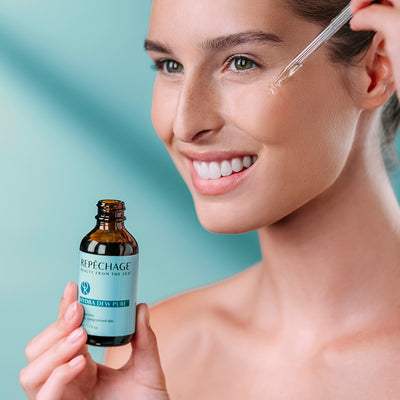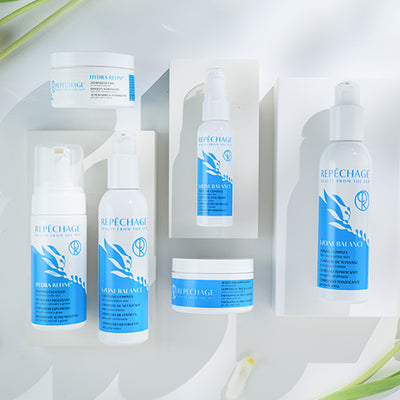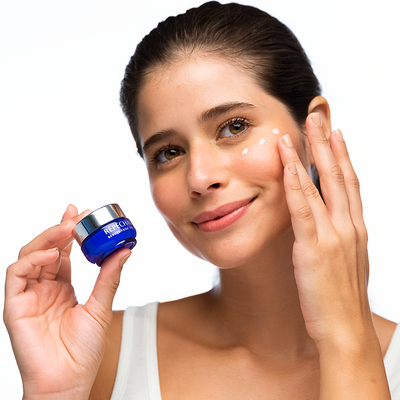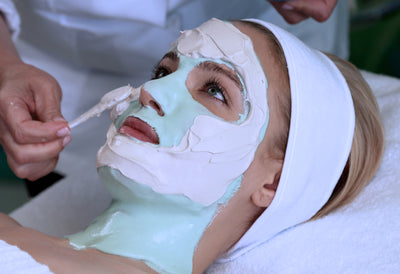Is Facial Steaming Good For Your Skin?

There is no denying the soothing feeling of relaxation that washes over you during your steaming sessions at the spa. In addition to restoring your sense of calm, the warm moisture also has benefits for your skin such as helping to open up your pores and relieve dryness.
While at-home steam treatments are now being touted as an easy way to give your skin a boost between your professional sessions, you should know that this treatment shouldn’t be taken lightly.
Facial steaming has proven benefits for improving the appearance of your skin’s texture, but must be performed correctly, and only on specific skin types. For example, did you know that those with sensitive skin may be better off exploring other treatments that are suited to their skin type?
Here, we’ll examine the benefits of steaming both in the salon and at home, who should avoid steaming and great alternatives.

The Benefits of Facial Steaming at a Spa
Although the benefits of steaming are amazing, you should be aware that what happens in the treatment room is hard to replicate at home. At the spa, your esthetician uses special machinery that allows them to control the temperature of the steam while directing the flow toward the areas of your face that benefit from the treatment.
There is also a high level of safety procedures followed during this treatment to ensure that the steam does not cause burns or irritate preexisting skin conditions. If you do decide to do a facial steam at home, always follow your esthetician’s recommendations for the best procedure to protect your skin, and know when it’s best to skip it.
Who Should Avoid Steaming?
For certain skin types, steaming can exacerbate negative conditions. Since some skin conditions are cyclic always tell your esthetician if you have a known problem such as rosacea since it may not be evident at first glance if you are not experiencing a flare-up. Although steaming can help loosen clogged pores, it also triggers the production of your skin’s natural oils that can irritate conditions such as acne.
The increased circulation can also generate more redness in people with rosacea as the blood vessels expand. Those with eczema or psoriasis may find that steaming worsens the condition, or you may find that it brings you relief.
People who have certain medical conditions, such as high blood pressure, need to avoid steaming as well. Since steam affects everyone’s skin differently, you should always approach your first steaming with an awareness of how it may affect your skin’s unique attributes.
Are Steaming Alternatives Available at the Spa?
If a facial steam does not appear to be the best treatment for your skin, or you have conditions that are contraindicative, you still have options. In the treatment room your professional esthetician can use other methods such as desincrustation masks, or a special alkaline solution to help soften oil and debris.
In some spas, the Dr. Lucas Cool Mist may be used as an alternative that still delivers a warm spray of pulverized lotions and toners that penetrate deeper in to your pores but without the side effects caused by more intensive steam treatments. You can also still enjoy all of the other steps of a traditional facial while skipping the steaming room.
Is Facial Steaming at Home Beneficial?
An at-home facial treatment is simple, inexpensive and a quick way to give your skin a much-needed boost. Steaming is a great first step during your facials at home since it helps to loosen dead skin so that exfoliation is more effective.
As the warm steam penetrates your pores, it also helps to release congestion in the pores so that dirt, debris and other impurities are flushed away easier during the facial cleansing portion of your beauty regimen. Steam also increases circulation in your skin which helps restore that youthful glow and allows your skin care products to better penetrate.
How to Get Spa-Quality Steaming Benefits at Home
You can incorporate the same benefits of a professional steam treatment at home by using the right types of products to cleanse your skin. After a few minutes of steaming, try exfoliating with Repêchage Honey and Almond Scrub to gently remove dead skin and debris more effectively. You can also use Repêchage T-Zone Cleanser to get deep pore cleansing that is similar to what the pros do at the spa. Since this product is made with a careful balance of natural ingredients, you can get skin that looks toned and balanced without stripping away moisture.
Now that you have a better understanding of how steaming works, you can use professional skincare strategies to get that glowing look that you desire. Whether you go for a full facial steam or replicate the benefits using Repêchage products at home, you always benefit from tailoring your skin care regimen to fit the unique qualities of your skin so that your true beauty is exposed!
And if you’re on the fence about visiting the spa, read 7 signs you need a facial to help you decide if it’s time to visit a skin care professional.














